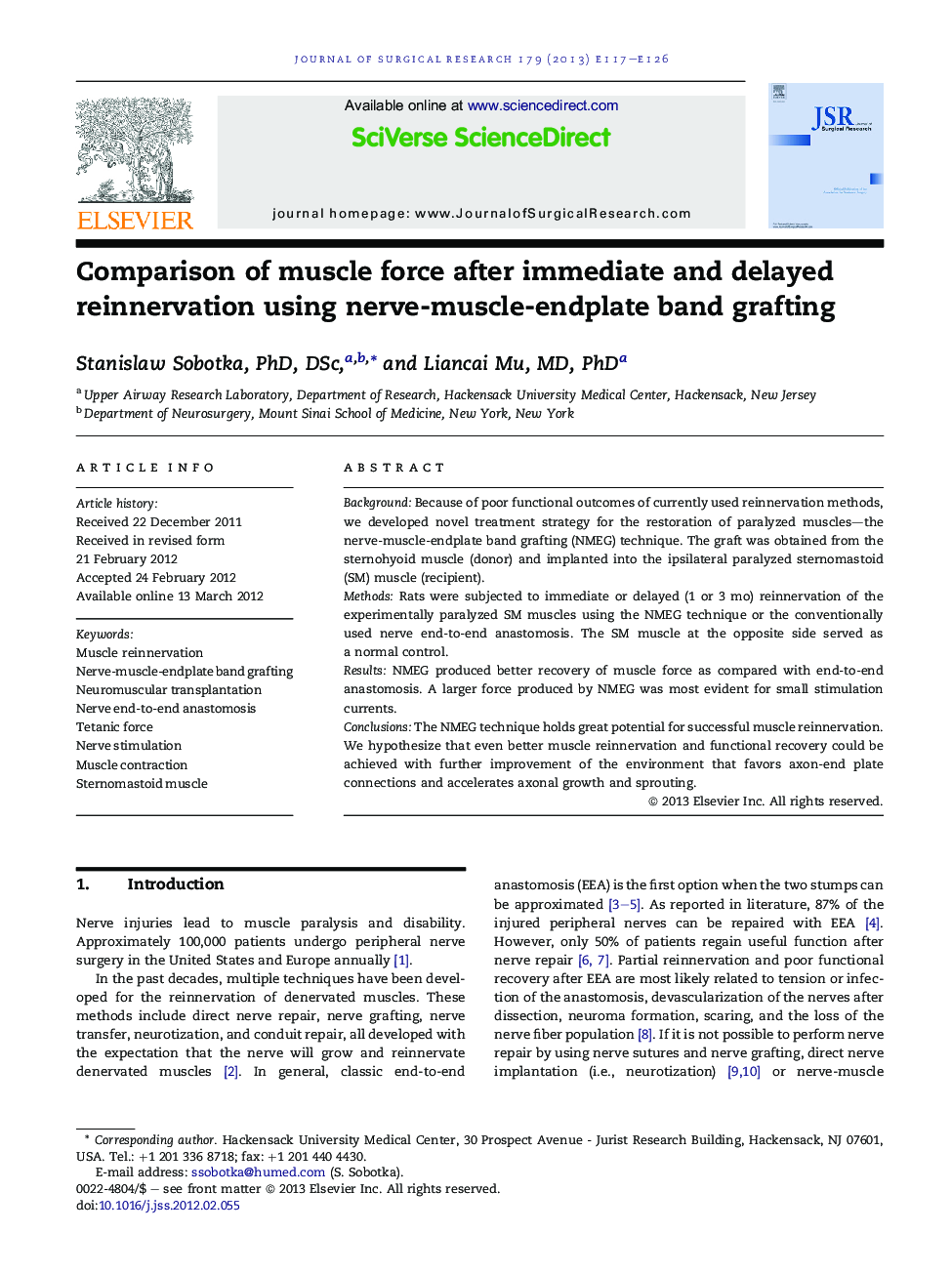| Article ID | Journal | Published Year | Pages | File Type |
|---|---|---|---|---|
| 4301120 | Journal of Surgical Research | 2013 | 10 Pages |
BackgroundBecause of poor functional outcomes of currently used reinnervation methods, we developed novel treatment strategy for the restoration of paralyzed muscles—the nerve-muscle-endplate band grafting (NMEG) technique. The graft was obtained from the sternohyoid muscle (donor) and implanted into the ipsilateral paralyzed sternomastoid (SM) muscle (recipient).MethodsRats were subjected to immediate or delayed (1 or 3 mo) reinnervation of the experimentally paralyzed SM muscles using the NMEG technique or the conventionally used nerve end-to-end anastomosis. The SM muscle at the opposite side served as a normal control.ResultsNMEG produced better recovery of muscle force as compared with end-to-end anastomosis. A larger force produced by NMEG was most evident for small stimulation currents.ConclusionsThe NMEG technique holds great potential for successful muscle reinnervation. We hypothesize that even better muscle reinnervation and functional recovery could be achieved with further improvement of the environment that favors axon-end plate connections and accelerates axonal growth and sprouting.
